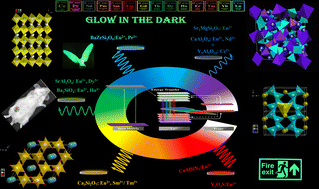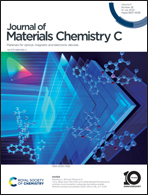Recent progress on lanthanide-based long persistent phosphors: an overview
Abstract
Persistent phosphors are highly explored materials due to their diverse applications (including anti-counterfeiting, information and data storage, photocatalysis, sensing, and bioimaging). Lanthanide activation offers effortless tuning of colour in several host lattices based on previously established theories such as the Dorenbos model. In this review, we present a compilation of some long persistent phosphors including various crystal structures exhibiting a variety of colours with varying host lattices and activating lanthanide ions. The understanding of various mechanisms of persistent luminescence (PersL) is refined, detailed and divided into various models, mainly the electron trapping–detrapping and hole trapping–detrapping models. These mechanisms involve various processes such as tunnelling between energy states to achieve PersL. Several phosphors have been commercially used and are integrated in everyday life, primarily in display applications. Continuous research has improved the properties and widened the future scope for these long persistent phosphors. This review deals with only a few examples in this well-established field, focusing on the past decade, separated by the crystal structure of phosphor materials and denoting the colour and time of their persistent afterglow. This comprehensive review presents guidance for the design and synthesis of new persistent phosphors and their versatile applications together with their structure–composition–property–relationship.

- This article is part of the themed collection: Journal of Materials Chemistry C Recent Review Articles


 Please wait while we load your content...
Please wait while we load your content...